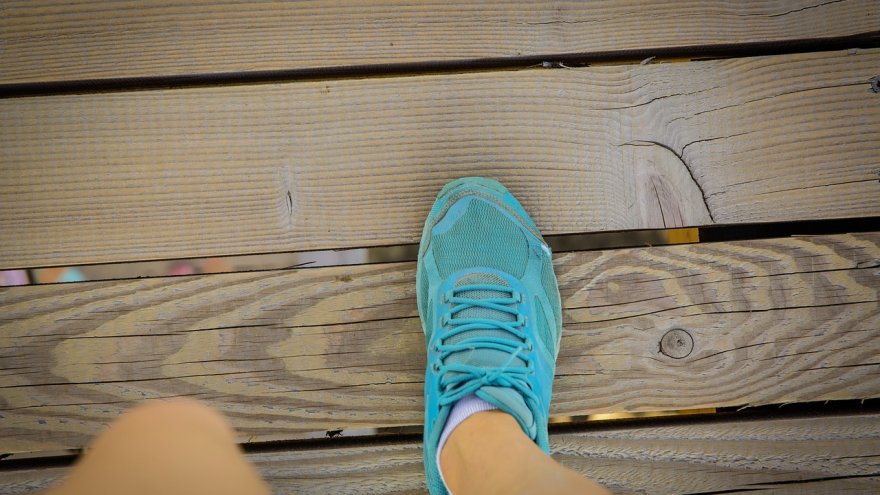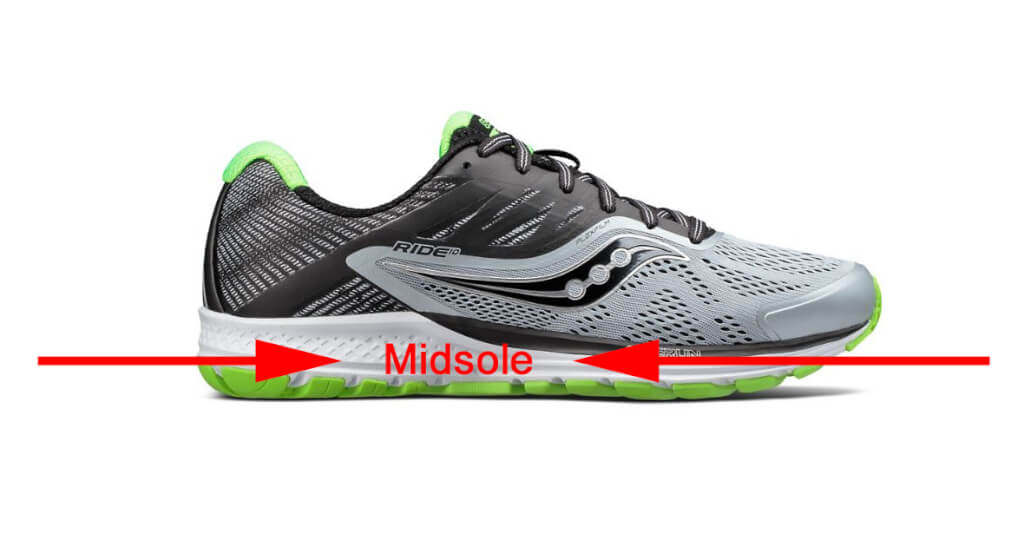How To Choose Versatile Trainer Shoes for Running

A trainer shoe is a specialized athletic footwear designed for various physical activities, primarily running. Unlike sport-specific shoes, trainer shoes offer versatility, providing support and cushioning for different workouts, including long-distance running, sprints, and cross-training.
Running is a popular and invigorating form of exercise that requires proper equipment to enhance performance and minimize the risk of injuries.
Every runner must consider training shoes as a crucial piece of gear. So let’s delve into the world of trainer shoes, focusing specifically on their importance and features for running enthusiasts.
What is a Trainer Shoe?
Trainer shoes for running are engineered to provide comfort, protection, and performance enhancement to runners of all levels. They are designed to absorb impact, support the feet and ankles, and promote an efficient running gait.
While trainer shoes can be specifically running shoes, they can also be used as cross-trainers, weightlifting shoes, and for boot camp and group fitness classes depending on the type of athletic shoe you choose.
They have a lot of functionality and are great for multi-directional movements, such as agility training, and can even be used as your everyday walking shoes.
The best shoe for people who run but are also gym-goers, lifters, and everyday cardio doers is a shoe with a lower heel and some arch support.
3 Things to Consider When Choosing A Trainer Shoe
1. Foot Type and Pronation
Understanding your foot type and pronation pattern is essential for selecting the right trainer shoe.
If you are unsure about what pronation is or means for you, seek professional advice or perform a gait analysis to determine whether you have neutral, overpronating, or supinating feet.

2. Comfort and Fit
You should prioritize comfort when trying on trainer shoes, considering factors such as cushioning, toe room, and a secure fit.
For some people, a wide-toe box or minimalist shoe makes a world of difference. Everyone’s feet are unique, so find a shoe matching your preferences and running style.
3. Training Goals and Terrain
Consider your training goals, whether it’s long-distance running, interval training, or trail running, as different shoes cater to specific needs.
The terrain you predominantly run on, be it road, trail, or track, should also influence your choice of the shoe with regard to traction and stability.
How to Pick the Right Trainer Shoe?
Picking the right shoe to use as your trainer shoe can be challenging when so many choices are on the market. Finding a shoe that works for your specific foot and gait is super important.
Your best bet is to go to your local running store, have someone do a gait analysis, and point you in the right direction of which shoe to try. Be sure to let the employee know that you want a multi-functional running and trainer shoe.
When searching for a trainer shoe, look for the type of shoe you can take out for a run and do your deadlifts and metcons in.
If you are primarily a runner, chances are you are still doing side-to-side movements during your plyometrics routine (which you should absolutely be doing).
Essential Features of a Trainer Shoe
Cushioning and Support
Adequate cushioning is crucial in absorbing the impact of each stride, reducing stress on joints and muscles. As many people say, running is hard on the knees. However, it does not have to be as detrimental to your knees as people like to think. Utilizing the proper footwear can help negate some of the knee issues many people experience after years of running.
The shoe’s midsole is one thing to look for in your trainer shoes. The midsole varies from one brand and model to the next. It is often made of foam or gel and provides support and stability, protecting the feet from excessive pronation or supination.
You can research different midsole gels and foam types to determine your best choice. If one does not work, try something else until you find something that feels right.

Breathability and Moisture Management
Proper ventilation is essential to keep the feet cool and dry during long runs. Excess moisture in your shoes can cause blistering and hot spots, which can be a nightmare. If you are logging a lot of miles, you want your feet to stay cool and dry to stay comfortable.
The amount of breathability you want may depend on the weather and road or trail conditions where you run. You may even want a few different options for different conditions.
Quality trainer shoes incorporate breathable materials and mesh panels to enhance airflow and prevent excessive sweating, reducing the risk of blisters and discomfort. Like the midsole of a shoe, different brands and models of shoes also use different materials for the “upper” of the shoe.
Some people like a lot of flexibility in their shoe mesh, while others want something more rigid. You can explore different options to find out what feels best for you.
Flexibility and Responsiveness
The shoe’s flexibility ensures a natural range of motion, allowing the foot to move dynamically through the gait cycle. Flexibility within the upper of the shoe was previously mentioned. There are other parts of the shoe that people look for flexibility in as well. Some soles are more flexible than others.
Think of rocky trails versus paved roads, depending on where you run. Your need for flexibility may vary. Shoes with rock plates tend to be less flexible, while a medium cushioned road shoe is better at moving with you.
Responsiveness refers to the shoe’s ability to propel the runner forward, enhancing energy return and speed. Let’s be honest here; all runners want as much assistance with their forward movement as possible. If you have looked into or learned about “super” shoes, then you likely know what it means for a shoe to be responsive.
A shoe with a carbon plate or “rocker” technology will likely be more responsive. Different foams also have different levels of responsiveness. Reading reviews is a great way to find out more about this.

Traction and Durability
A reliable outsole with excellent traction offers grip and stability on various surfaces, including pavement, trails, or tracks. If you are running dry paved roads, traction is probably much less important than running trails littered with slick rocks or bombing down muddy hills. Traction can also be important if you are running roads in the rain.
There are two components to the traction of a shoe. You should pay attention to the rubber the shoe is made of and the lugs on the shoe. Many trail shoes are made of rubbers that are used for car tires and have deep lugs to dig into mud and gravel. While road shoes are not as likely to have lugs, they have different treaded patterns, much like a tire would, that will provide more or less traction.

The shoe’s durability is crucial to withstand the repetitive impact of running and maintain structural integrity over time. Shoes with a thin breathable upper are more likely to have a toe wear a hole through it, while shoes reinforced with rubber on commonly worn parts are using a less breathable material will be more likely to withstand that kind of wear.
Durability is important for people logging a lot of miles on the road and to those who tend to have foot-specific “wear spots” in their shoes.
Types of Trainer Shoes for Running
Neutral Trainer Shoes
These shoes are designed for runners with neutral or average pronation, providing cushioning and support without significant corrective features.
Neutral trainer shoes are ideal for runners with a natural foot strike. They are versatile and suitable for a wide range of distances and speeds. These are also a great option to use as your gym shoes for your weightlifting routines.
- Check our guide on the best neutral trainer shoes on the market
Stability Trainer Shoes
Tailored for runners with mild to moderate overpronation, stability shoes provide additional support and medial arch reinforcement. These shoes aim to correct pronation issues and promote a more efficient stride.
Though we mentioned specifically running here, wearing a stability shoe when doing something like lunges or lateral movements is a good idea for people with pronation issues. This may help prevent injury later down the road.
- Check our guide on the best stability trainer shoes on the market
Motion Control Trainer Shoes
Specifically designed for runners with severe overpronation, motion-control shoes offer maximum stability and control. These shoes feature advanced support systems, such as dual-density midsoles and firm medial posts, to prevent excessive inward rolling of the foot.
Using a shoe that can help you have more control over how your foot moves can potentially help reduce the risk of stress fractures, especially for runners who overpronate or have issues with excessive inward rolling of the foot.
- Check our guide on the best motion control trainer shoes on the market
The Takeaway
Understanding the key features, different types, and factors to consider when choosing a trainer shoe can ensure an enjoyable and safe running experience. Finding the right trainer shoe is a significant step towards unlocking your running and crosstraining potential and achieving your goals.
Remember, there are many different brands of training shoes out there. You have likely heard of brands like Nike, Asics, Adidas, and Reebok. But there are other great brands you should consider exploring, such as Altra, Saucony, and Brooks.
Latest Articles
 Is Running on a Treadmill Easier Than Running Outside?Runners have their own preferences, whether it is treadmill running, running outside on the road, or exploring trails. So...
Is Running on a Treadmill Easier Than Running Outside?Runners have their own preferences, whether it is treadmill running, running outside on the road, or exploring trails. So... Is It OK to Use Trail Running Shoes on the Road?While trail running shoes can be used on roads, especially in situations where a runner encounters mixed terrains or pref...
Is It OK to Use Trail Running Shoes on the Road?While trail running shoes can be used on roads, especially in situations where a runner encounters mixed terrains or pref... How to Fix Sore Quads After Running?Rest, ice, gentle stretching, and over-the-counter pain relievers can help soothe sore quads after running. Also, ensure ...
How to Fix Sore Quads After Running?Rest, ice, gentle stretching, and over-the-counter pain relievers can help soothe sore quads after running. Also, ensure ... 10 Fruits With The Most Electrolytes to Replace Sports DrinksThese fruits are high in electrolytes such as potassium, magnesium, and calcium, essential for hydration, muscle function...
10 Fruits With The Most Electrolytes to Replace Sports DrinksThese fruits are high in electrolytes such as potassium, magnesium, and calcium, essential for hydration, muscle function...

